How the heart's electrical system works
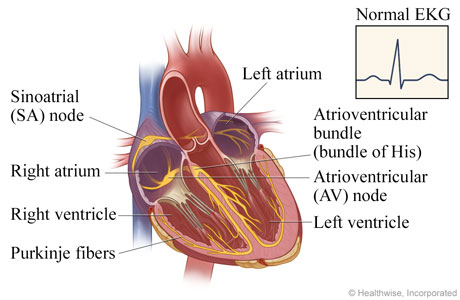
In a normal heart, the sinoatrial (SA) node triggers the electrical impulse, causing the upper chambers (atria) to contract. The signal travels through the atrioventricular (AV) node to the atrioventricular bundle, which divides into the Purkinje fibers that carry the signal and cause the lower chambers (ventricles) to contract. The electrocardiogram (EKG, ECG) tracing shows this normal electrical activity.
How atrial fibrillation happens
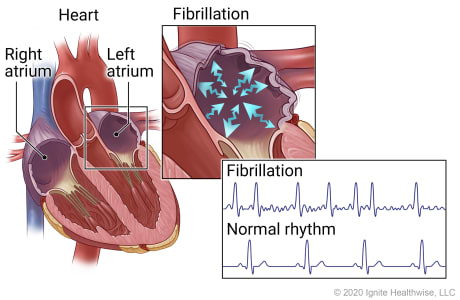
In atrial fibrillation, erratic electrical impulses can cause the upper chambers of the heart (atria) to fibrillate, or quiver, resulting in an irregular and frequently rapid heart rate. The irregular, sawtooth pattern in the electrocardiogram (EKG, ECG) tracing shows these erratic impulses.
Catheter is threaded through a vein to the heart
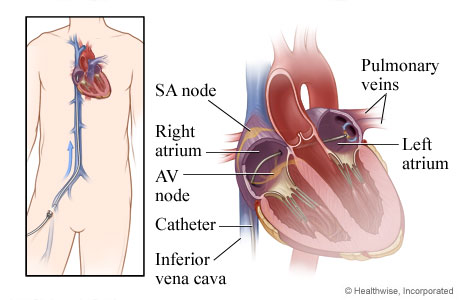
For this nonsurgical procedure called catheter ablation, thin tubes called catheters are inserted into a vein, typically in the groin or neck, and threaded through the vein into the heart. A small puncture in the tissue that divides the right and left chambers (septum) allows the catheter to pass into the left atrium.
Heart tissue is destroyed
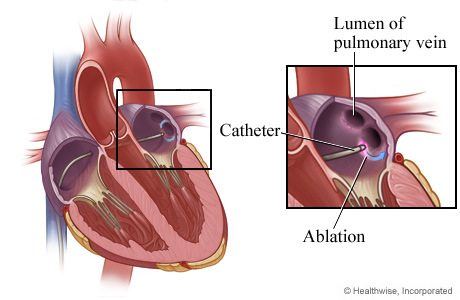
An electrode at the tip of a catheter sends out energy, such as radio waves, that destroys (ablates) the tissue that is causing atrial fibrillation. In this image, the energy is destroying tissue at the base of the pulmonary vein. (The pulmonary veins bring blood back from the lungs to the heart.)
Scar tissue prevents or eliminates impulses
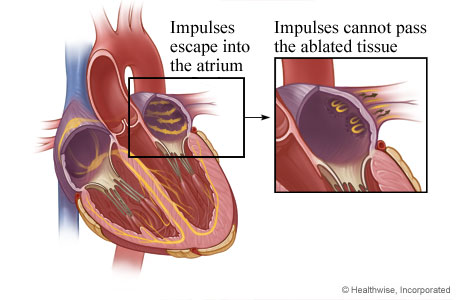
Catheter ablation creates scar tissue that prevents impulses from leaving the pulmonary veins or eliminates the impulses altogether.
Current as of: July 31, 2024
Author: Ignite Healthwise, LLC Staff
Clinical Review Board
All Healthwise education is reviewed by a team that includes physicians, nurses, advanced practitioners, registered dieticians, and other healthcare professionals.

